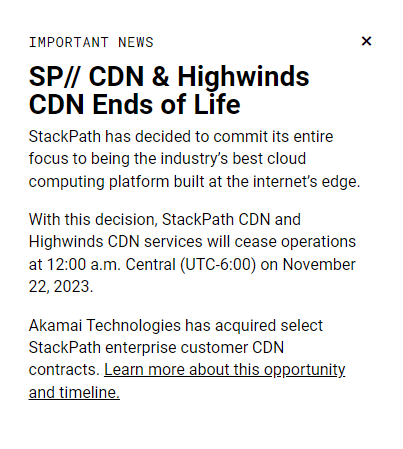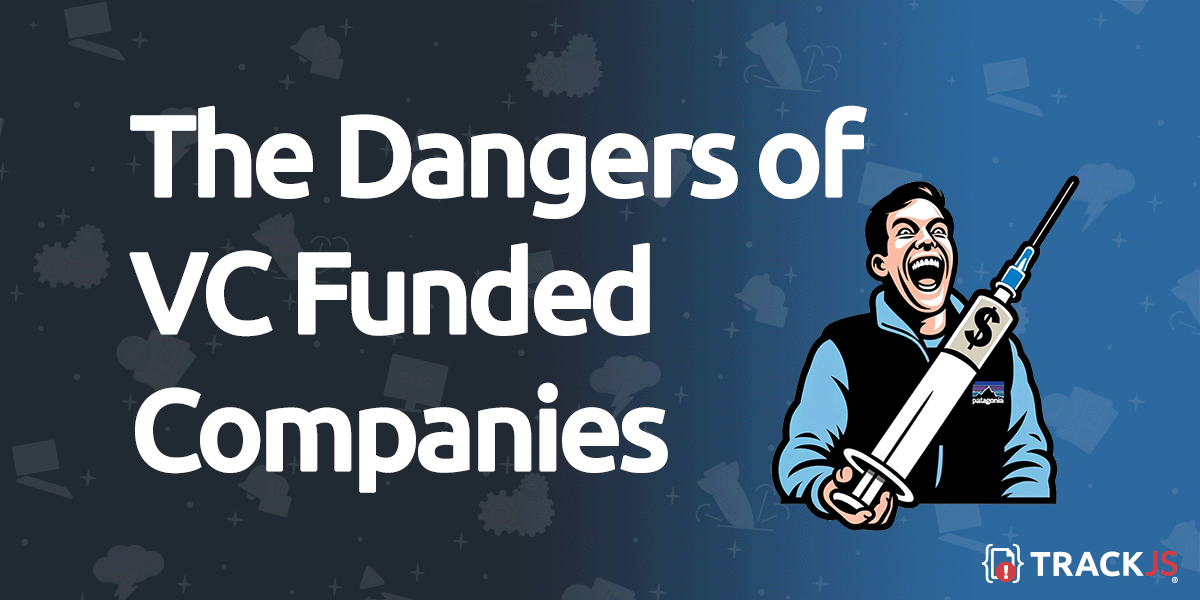TrackJS started ten years ago. To date, the only funding TrackJS ever received was the initial founder investment of $4,500 dollars (a whopping $1,500 per founder). Today, you’d call us a “bootstrapped” business.
We’re proud of that fact. It means there’s no outside investors. No one to make us build a product we don’t want to build. And no one that can pull the plug if the growth chart doesn’t look like a hockey stick.
Here’s one example of why that matters.
Picking a CDN Vendor
We host a JavaScript agent that our customer’s install on their sites. Bundling our script is fully supported, but lots of folks prefer to load directly from a CDN. That way, setup is a cinch, updates are instant, and CDN’s generally have PoPs closer to your users so performance is consistently good.
No One Ever Got Fired for Choosing AWS
We originally chose AWS Cloudfront as our content delivery platform. At the time, Cloudfront was very basic but fit the bill. It served our static content in a geostributed manner with performance that was, charitably, acceptable. The other nice feature was that you could easily configure it to use an S3 bucket as the content origin.
No One Ever Got Rich From Choosing AWS, Either
As our traffic grew, so did our AWS bill. And not just a little bit. At one point our CDN bandwidth bill was bigger than our dedicated server infrastructure bill! AWS might be reliable, but you pay a premium for everything.
Finding a New CDN Vendor
At the time there weren’t so many options as today. There were the big dogs, like Akamai, but you know that story.
TrackJS: “Tell me you’re an outlandishly expensive enterprise focused company without telling me”
Akamai: “Contact a sales rep for pricing”
We got to thinking. jQuery was all the rage back then; it was ubiquitous and used by millions of websites. Surely their developers would make smart technical decisions. Who did jQuery use as a CDN?
MaxCDN, the Glory Days
So we started using MaxCDN (née NetDNA). A content delivery network founded by a mixed martial arts fighter. It was simple, easy to configure, and much cheaper than Cloudfront. They had impressive clients (like jQuery) but they also catered to small businesses like ours. Their pricing was transparent and the performance was better than Cloudfront.
But nothing lasts forever.
A Dark Cloud On The Horizon.
In 2016 we get an email from the other (presumably less physically imposing) founder. Here’s some of it.
We started MaxCDN with the vision of creating an automated content delivery platform that customers would love… growing to 15,000 customers… We did this all with very little funding.
Yep, OK. That’s one reason we liked your company…
Out of the blue one day we got a call from Lance Crosby and his team who told us about their vision for StackPath
Uhh, who?
Joining StackPath is a perfect fit for my initial goal and obvious to me that it’s the next step in MaxCDN’s evolution.
Ope. Yep. So the MaxCDN guy needed a new boat.
Who the Hell is StackPath?
Well I’d never heard of StackPath, but I know an ominous email when I get one. Naturally the first stop was Crunchbase. Who are these guys? They came out of nowhere and bought our perfectly functioning CDN provider.
Here’s what their launch PR release says:
StackPath today emerged from stealth as the Security-as-a-Service company providing a path to a more secure Internet and announced a significant investment from ABRY Partners, a $4.3 billion private equity fund focused on investing in information and business service companies.
I don’t know anything about stealth (like they’re some kind of damned fighter plane?), but I can see VC/PE funded nonsense a mile away.
And it’s a lot of funds to be sure. They’ve raised just shy of $400 million since 2015. And unfortunately that means some lofty expectations. Expectations that our poor CDN will never meet.
Living on the Edge
We assumed the worst, but for awhile things were fine. We eventually had to migrate to their new “StackPath CDN”, which was probably just MaxCDN gear with a different domain, but otherwise worked OK. Funny enough, our monthly bill also went down. Turns out they were burning some of that investor money to keep bandwidth prices extra low.
But then, as inevitable as that hangover after your fourth fireball shot:

Best cloud computing platform? AWS, Azure, GCP and Cloudflare are all better known and more relevant. And you know what else? Every damn one of them has a CDN product.
The last paragraph of the announcement is particularly rich: “Akamai Technologies has acquired select StackPath enterprise customer CDN contracts”.
“We look forward to welcoming these new enterprise customers and providing them immediate access to the agility and scale of Akamai Connected Cloud to create and deliver flawless digital experiences,”
StackPath sold their most valuable customers for $20 million to Akamai and hung the rest out to dry. For context, that’s just 5% of the total funding they’ve received so far.
VC Funded Companies Do Weird Things
The point of all this is to illustrate why you should always be leery of VC funded companies. StackPath needed huge returns to appease their investors. Twenty million buckaroos sounds pretty good to me, but when you’re staring down the barrel of $400 million investor dollars that need to be multiplied, you make extreme choices.
The net result was that we paid the price. Not just us, but every other customer they had. We spent hours of our time investigating and then migrating to a new CDN. Multiply that across all those other customers and you’re looking at thousands of hours wasted, serious operational risks taken, with no real upside for anyone. All because some limited partners wanted their 10x and thought “edge computing” was the buzzword that could deliver it.
Choose Sustainable Companies
When you’re looking for a new vendor, or a new service to use, or a new tool for your stack, you should always factor in the amount of funding a company has taken. What if the investors want them to pivot? What if they need to shut down due to difficult funding conditions? What if you’re a small customer - will they treat you differently because you don’t help their enterprise value or move the needle on their next funding round?
Let’s say you’re in the market for a frontend error monitoring service; there’s plenty of options out there. If you go with TrackJS, you don’t have to worry about that stuff. We’re bootstrapped and profitable. I wrote even more about the importance of profitability, so go read it.
We do frontend error monitoring, and to borrow a famous law firm marketing slogan from my childhood: “It’s all we do, and we do it well”
Postscript
If you’re wondering who we’re using for our CDN services now, it’s bunny.net. They remind us very much of MaxCDN 7 years ago. So far so good. Now we’re just waiting for the AI generated buzzword laden acquisition email.


